
Disaster Management Manual
A manual for practitioners and decision makers!

Disaster Management Manual
A manual for practitioners and decision makers!
The survey on disaster information sharing and management is a tool that allows an overview of information management during a disaster. The goal of the survey was to collect information management data in the disaster timeline shown in Figure 4.2.2.1. As indicated in Figure 4.2.2.1, the survey was planned from when the disaster occurred, the first response phase and dissemination of the disaster information to the public.
The survey questionnaires related to road administration disaster management focused on the disaster response phase, analyzing current practices among PIARC member countries and others.
The survey included questions on basic information of responders, and questions on disaster information sharing and management practices in their organizations. The survey was based on several key issues to investigate the information management process. In total, the survey included six questions on public information and two questions on technical information.
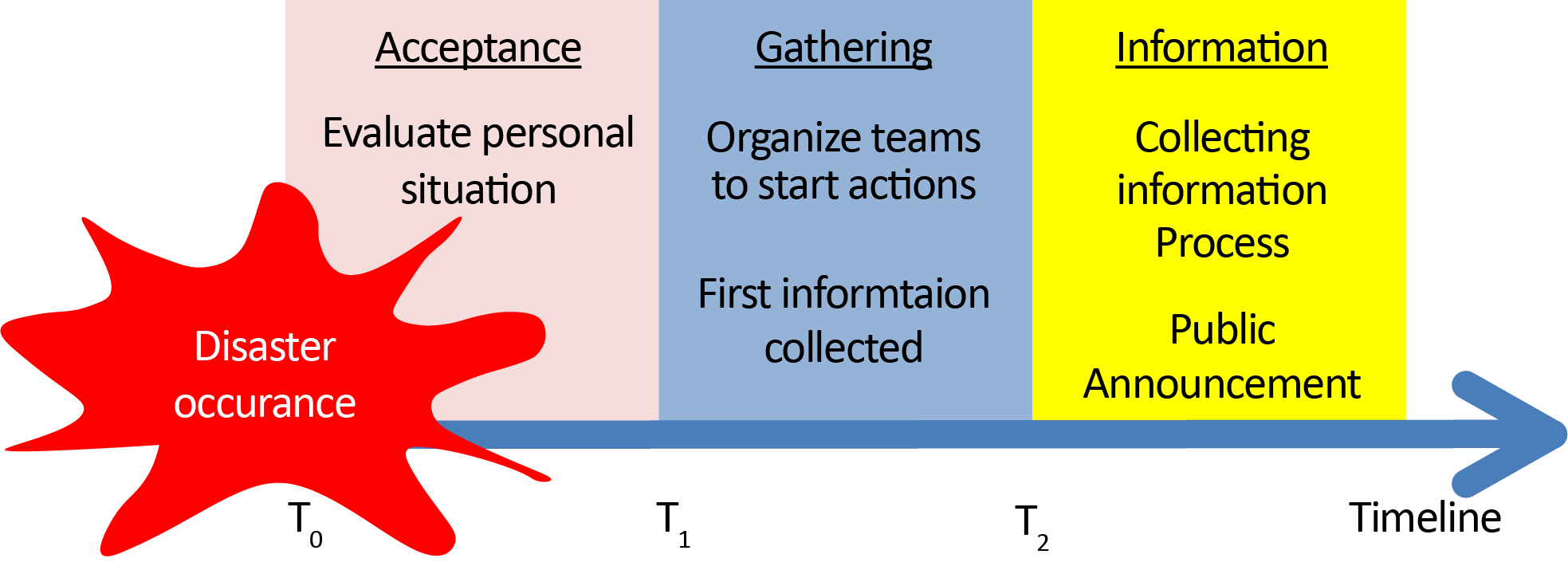
The survey was sent to PIARC TC members and to South American countries, by the cooperation of DIRCAIBEA (Council of Road Administration Directors from Iberia and Latin America). The answers were received from 19 countries shown in Table 4.2.2.
An initial analysis was made to the communication structure. According to the survey results, all of the survey countries have a similar communication structure, composed of collecting information from different kind of sources, managing information and processing information in the management control center, and disseminating and announcing information through VMS or public media. The general communication structure is shown in Figure 4.2.2.2.
| Survey Type | Received | Countries |
|---|---|---|
Survey through TC Members | 13 | Austria, Australia (2), Chile, UK, Japan (6), USA(2) |
Survey through First Delegates | 4 | Canada-Quebec, Denmark, Hungary, Mexico |
Survey through Related Organizations | 1 | Dominican Republic |
Others | 1 | Malaysia |
Total | 19 |
|

Some countries pointed out that the vital role of the disaster management center is not only road operation management but also communication management. One of the main roles of communication management is to coordinate sharing the disaster and emergency information among road organizations, related organizations and road users through internal and external communication. This function is very important but only generic communication plans have been developed in each country. There are few examples of pre-determined detailed communication plans for disasters. Figure 4.2.2.3 shows a typical internal communication diagram between a central communication center and their branch offices in road organizations. Figure 4.2.2.4 shows an external communication diagram from collection of the disaster information to dissemination of the disaster information to the public.
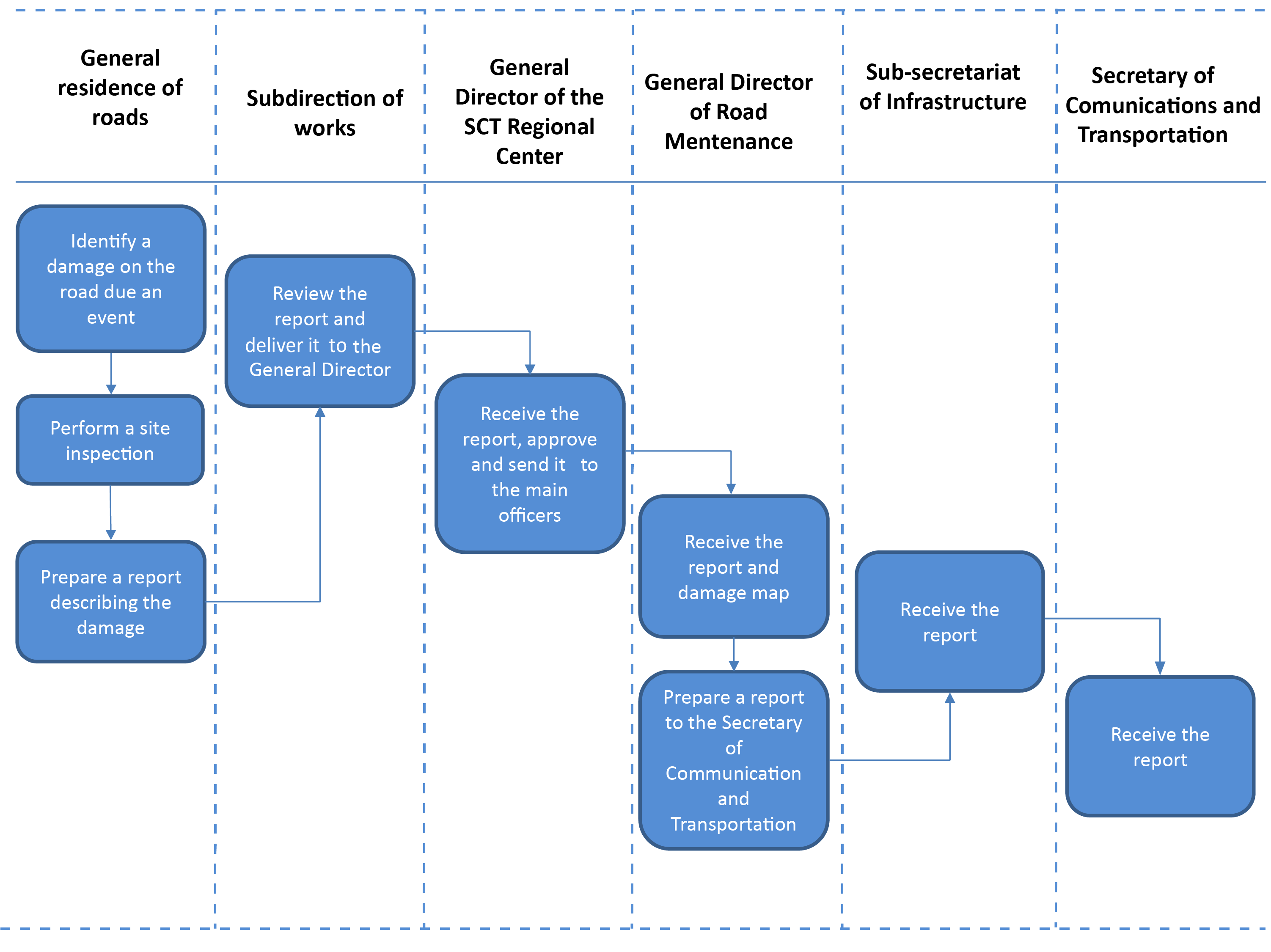
Figure 4.2.2.5, developed in the disaster management study in the PIARC previous cycle 1, indicates the importance of cooperation inside road-related organizations. This figure also shows the importance of communication between road-related and non-road-related organizations. This diagram can also be applied to communication:
According to the findings from the survey, it is identified that enhanced internal communication results in disaster management improvements. To ensure effective communication, daily communication practices are necessary. Coordination with technical specialists and political authorities is also a part of internal communication that is needed for decision making. In order to strengthen such decision-making, clarification of authority and responsibilities, is essential.

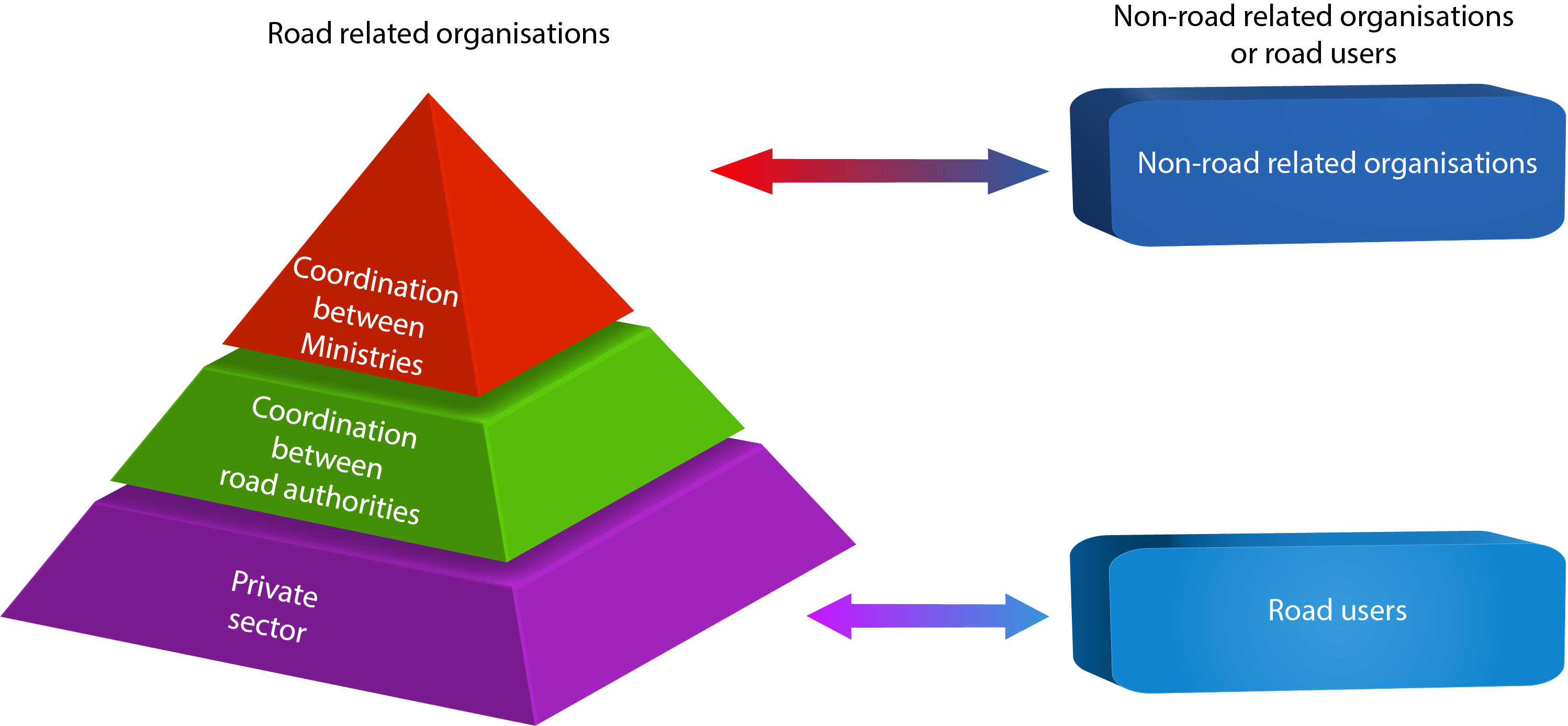
Figure 4.2.2.6 shows the general status of situation reporting. Half of the survey countries have a standard form (SitRep) to report the incident/disaster situation. Other countries reported the incident/disaster situation in free format. Whether the standard situation reports (SitReps) are prepared or not, most countries had developed a database or report system for better disaster response. SitReps are very effective to standardize information and are easy to use but may not be as effective for irregular incidents such as multiple modes of incidents/disasters. However, they are an efficient way of systematizing information and as a backup plan when communications systems are lost. As for free format reporting system, it is powerful to report any kind of incident and disaster, but the quality of the report depends on the skill of the reporter.

Figure 4.2.2.7 shows the difference between processing public information and technical information. They each have a particular function, therefore pubic information and technical information are treated differently in general. However, some countries tried to link both kinds of information in order to show the technical background to the public.
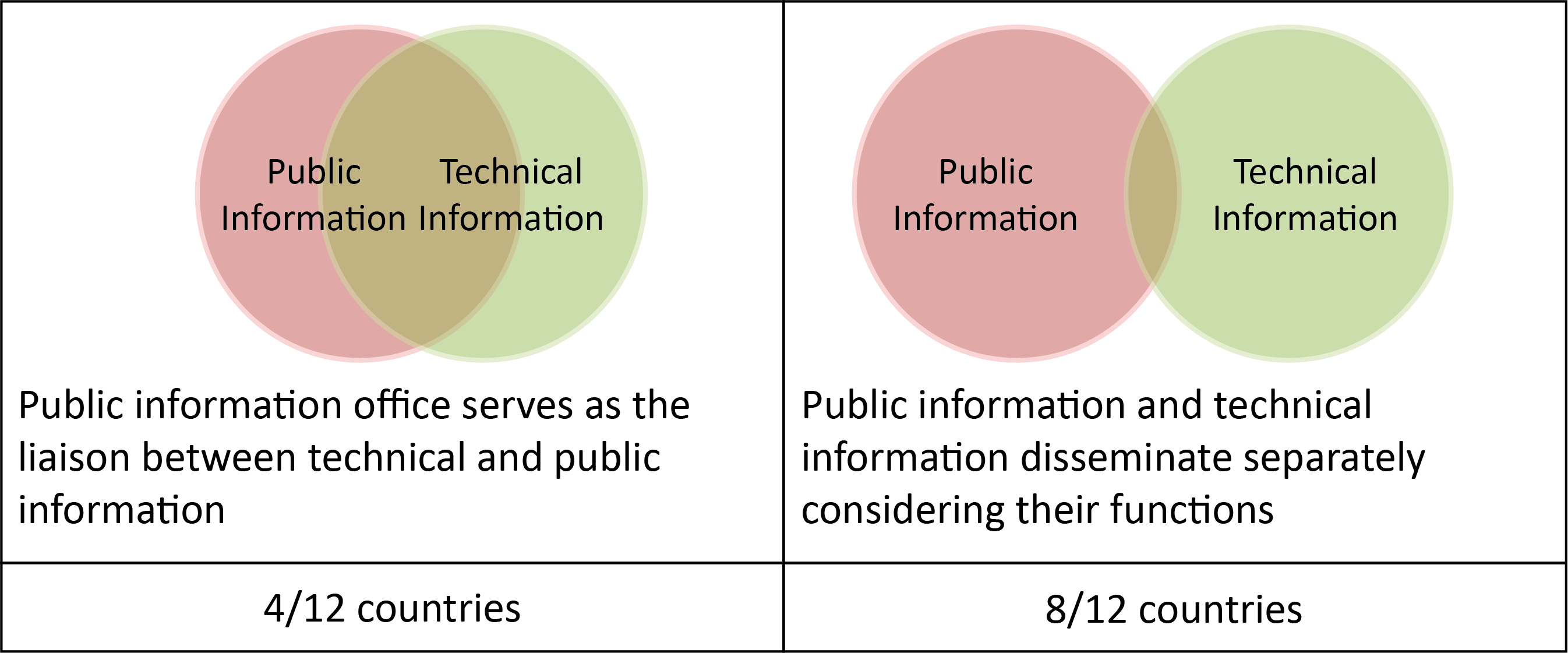
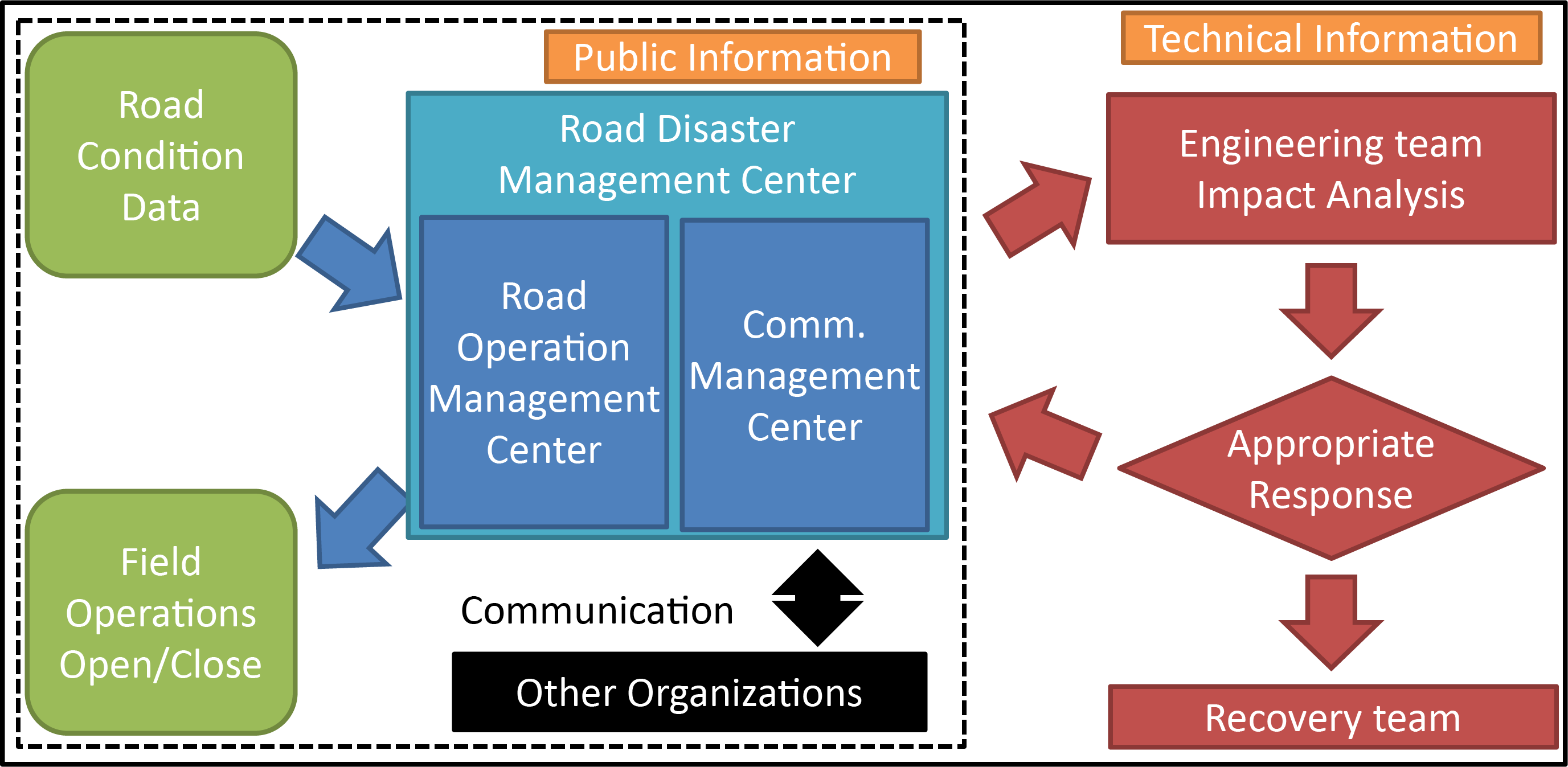
Figure 4.2.2.8 shows the general flow of technical information. The collection of disaster information is the same as for public information. The difference is that the technical information is processed by a special engineering team. After the engineering analysis of the disaster, an appropriate response is fed back to the management center. Analysis and synthesis of public and technical information in the management center is required before it is made public, to effectively respond and avoid a secondary disaster.
Generally speaking, as shown in Figure 4.2.2.9, public information is very important to response management, whereas the technical information is very important in recovery management. This is one of the reasons why public information and technical information are treated separately. This idea is effective in management of single mode disaster. In the case of a multiple mode disaster, such as simultaneous multiple disasters or consecutive multiple mode disasters, technical information is also very important in response management, such as earthquake and tsunami, land slide and debris dam, and also heavy rain and flooding. Therefore, linking public and technical information should be considered in disaster management.

Figure 4.2.2.10 shows the current preparedness of communication tools where communication is restricted. In the survey countries, there are no alternative tools except tools shown in Figure 4.2.2.9. Survey answers in relation to tools used where no communication line is available are varied. This indicates that preparation for the loss of communication lines should be considered.
Figure 4.2.2.11 shows a summary of the communication recovery for the 2011 East Japan earthquake and tsunami. The communication tools recovered gradually from elementary to complex tools. Countries should prepare for communication in this environment.
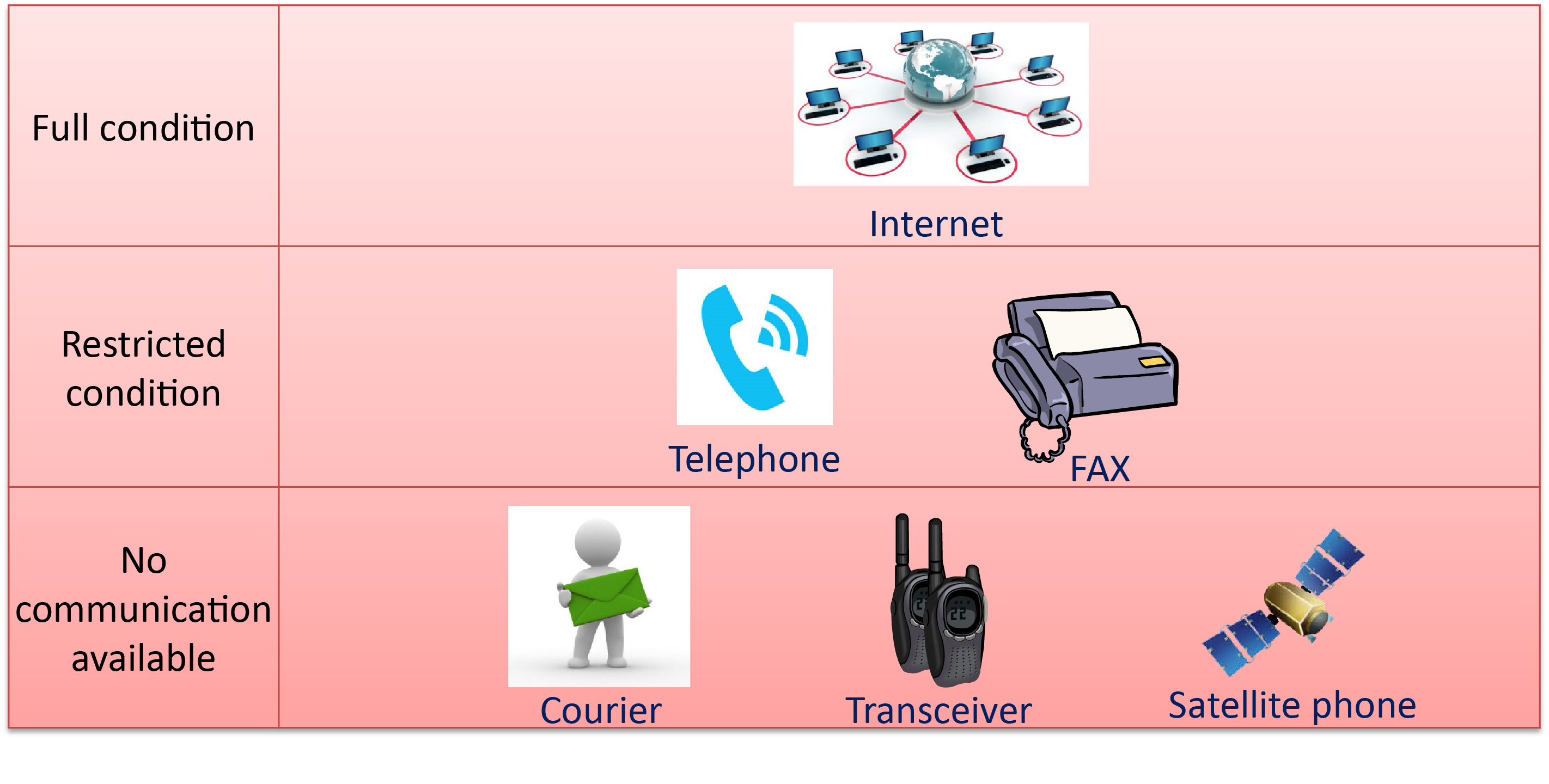

Communication structure in disasters is a key component of information management. Development of a communication structure is urgently recommended in many road organizations.
Social media and communication technology allow efficient exchange of information. But it can become risky when information comes from several sources and each one has a different interest and goals.
Reliability of information is required in order to inform and not misinform, especially when the population is facing a major disaster.
User information is very fast but less reliable than road agency information, due the requirement to firstly validate it. Preliminary technical information is useful to establish preliminary frameworks for resources and budget.
The importance of backup for complex communication scenarios should be taken into consideration. While information gathering methods that rely on technology are important, it is convenient to have a method for instances where there is a lack of connection.
Media sharing needs behavioral rules, as excessive text or fake images add inefficiency to the process.
During a scenario of full communication, the internet and social media are widely accepted as reliable and efficient ways to transfer data. However, old technology is reliable when a communications restriction appears.
Social media and new technology are changing communication and how information is shared.
Data is transmitted worldwide very fast and to many people instantaneously. But in a disaster, systems or technology could be affected. That is why it is important to establish how to transmit the information in several situations.
Questions in the survey aimed to understand what systems are used as backups in extreme situations.
User information and technical information are different due to their different objectives. What users need is information about connectivity and traffic conditions (average operational status and connectivity) but road agencies need information about infrastructure conditions and damage to establish disaster teams for response.
Technical information about infrastructure damage is more detailed and slower to be obtained. Damage needs to be identified on site or via monitoring technology, and also needs a technical vocabulary that is not always understandable for road users.
This must be considered when you define the ways to share information in multiple mode scenarios, as technical information must be deposited in a database in order to process it and obtain relevant data for planning, but user information is not necessarily useful as historical data as long as users are informed.
Technical information should be standardized and not rely on a particular software package or database, which may contribute to misunderstanding and bad decision making. This will require some training and coordination among road agencies and organizations.
Information management is becoming a key component in disaster management with the progress of internet communication technology. Currently large and important progress can be seen in disaster information management. Conclusions and recommendations are summarized below:
Management of public and users expectations is important in order to try to be clear about what the public and users expect from Roads Directorate and make clear what they will get. So, the goal is to keep users frustration levels low by been realistic with the expectations and make them understand the spirit of the project.